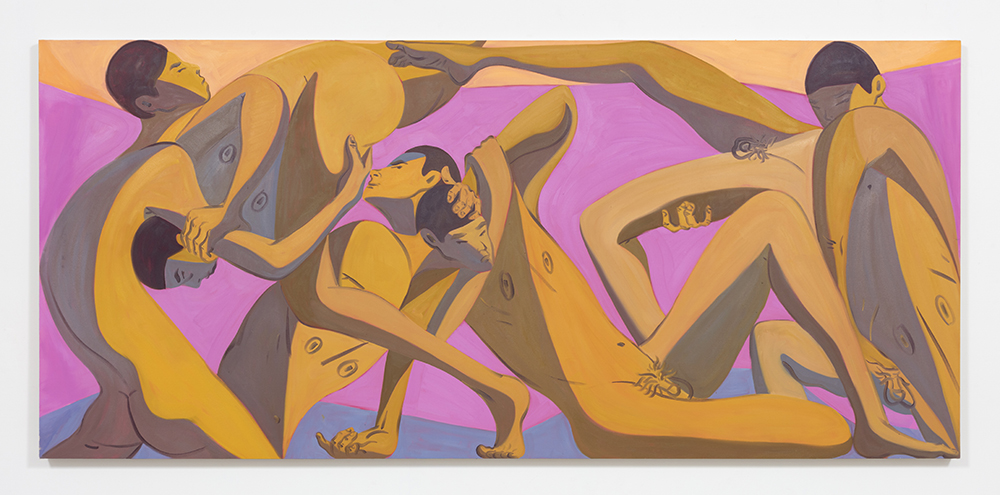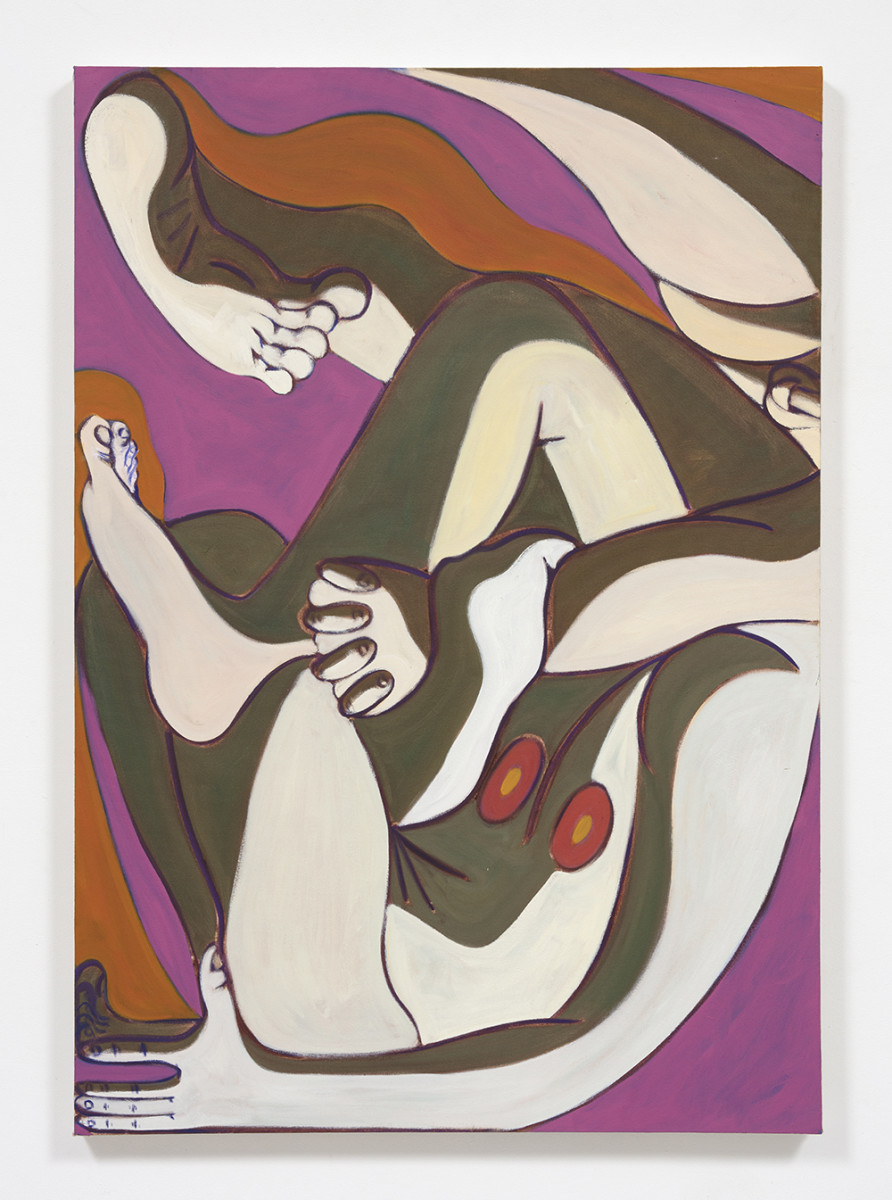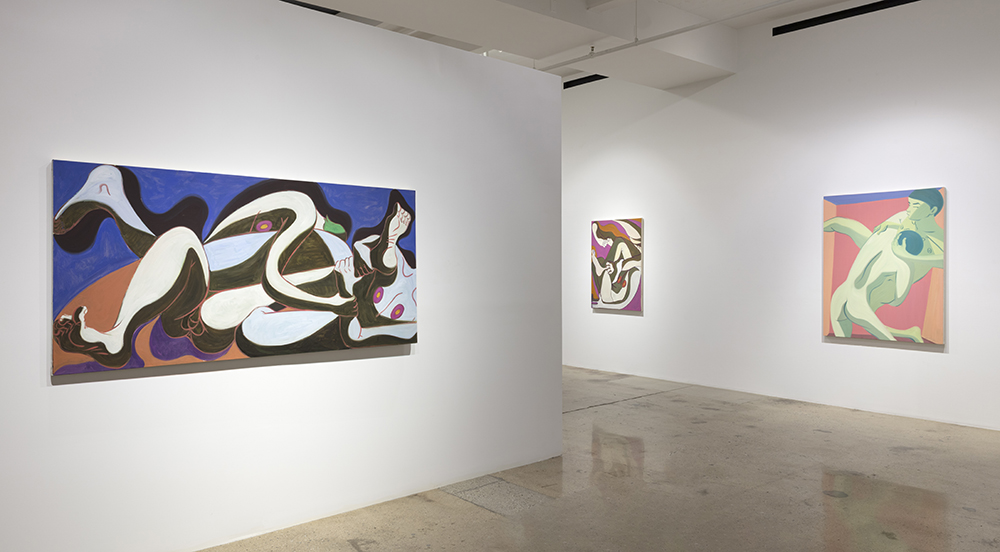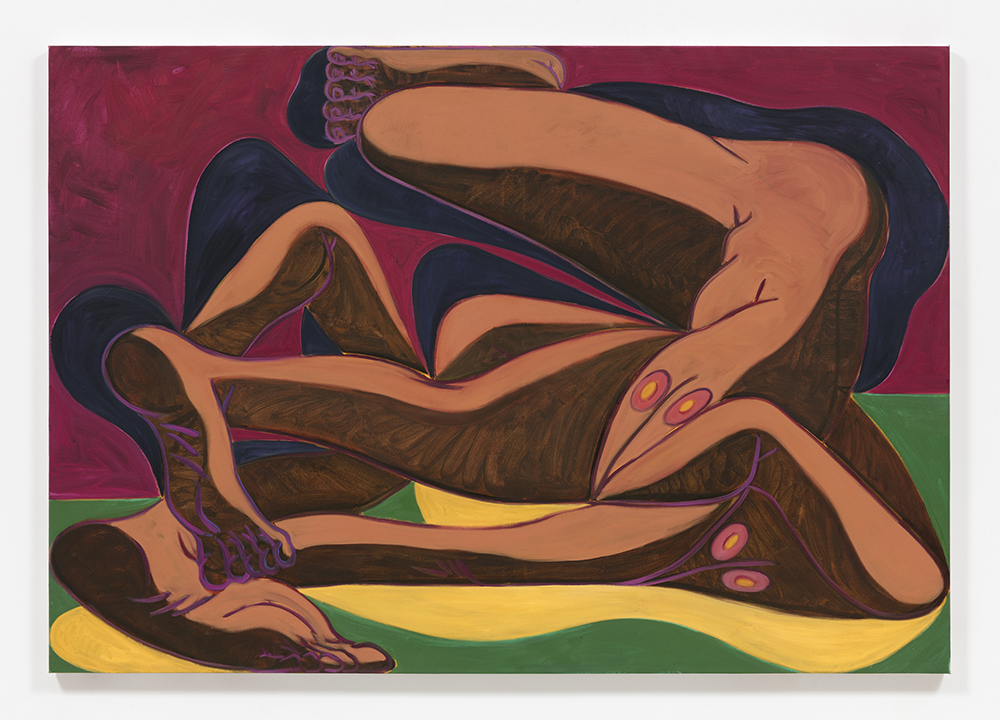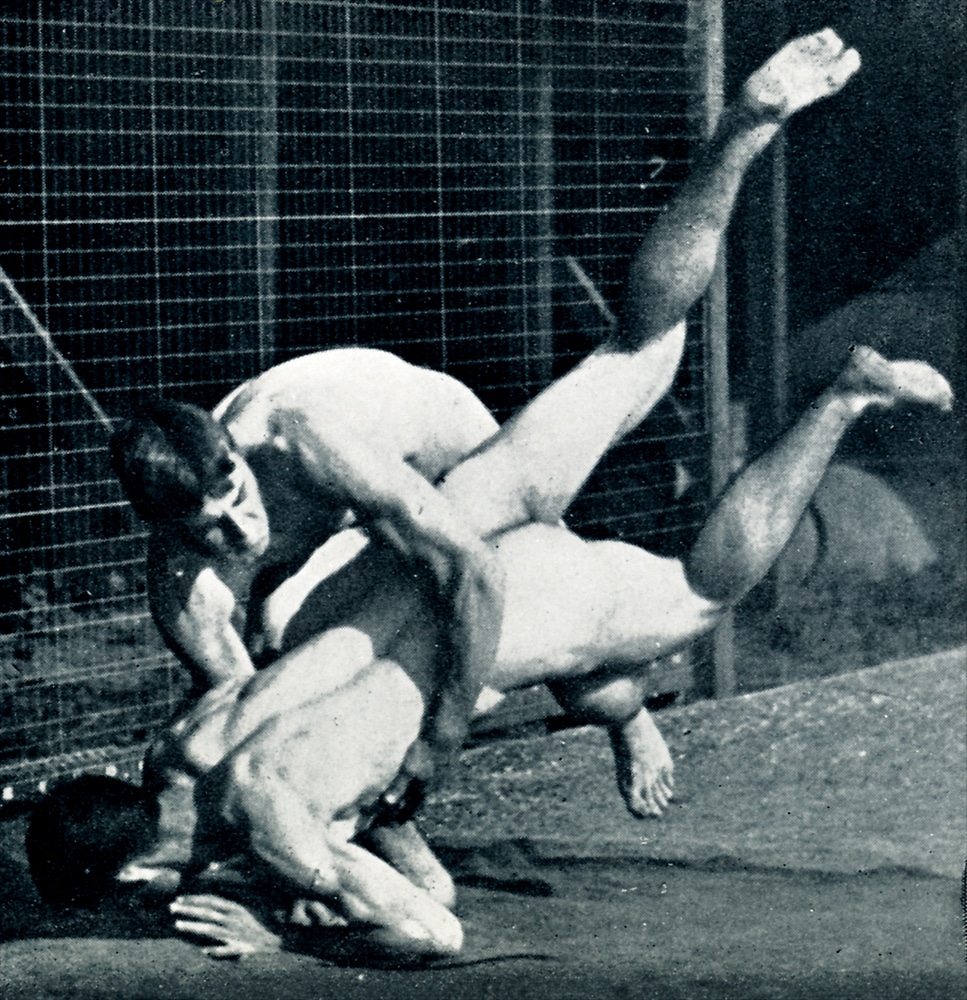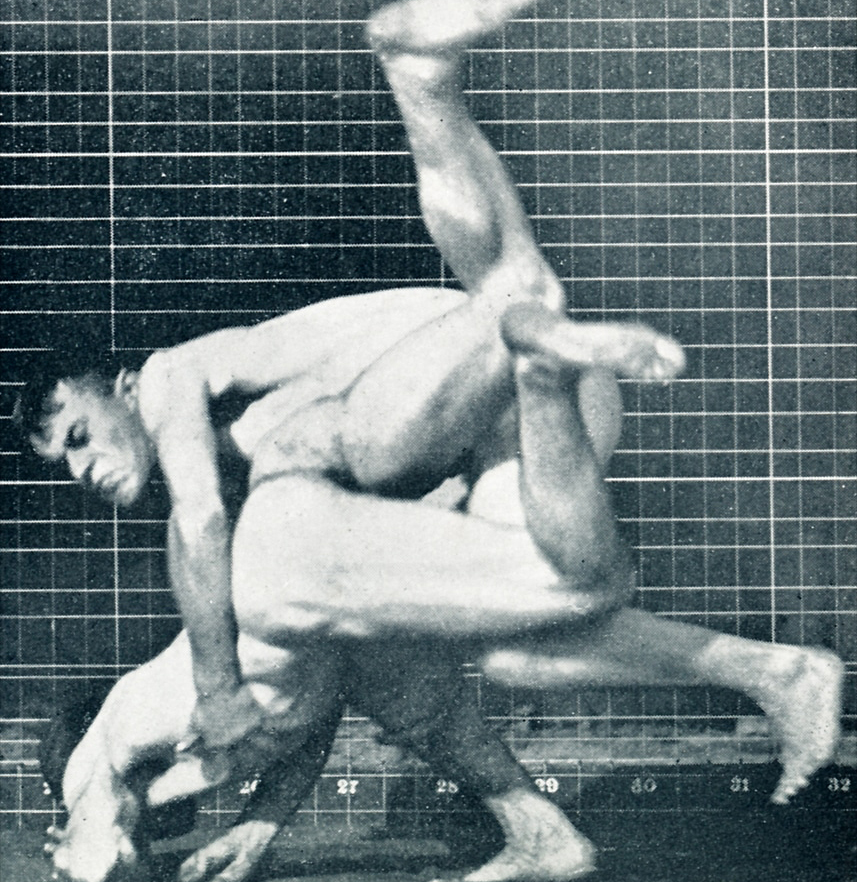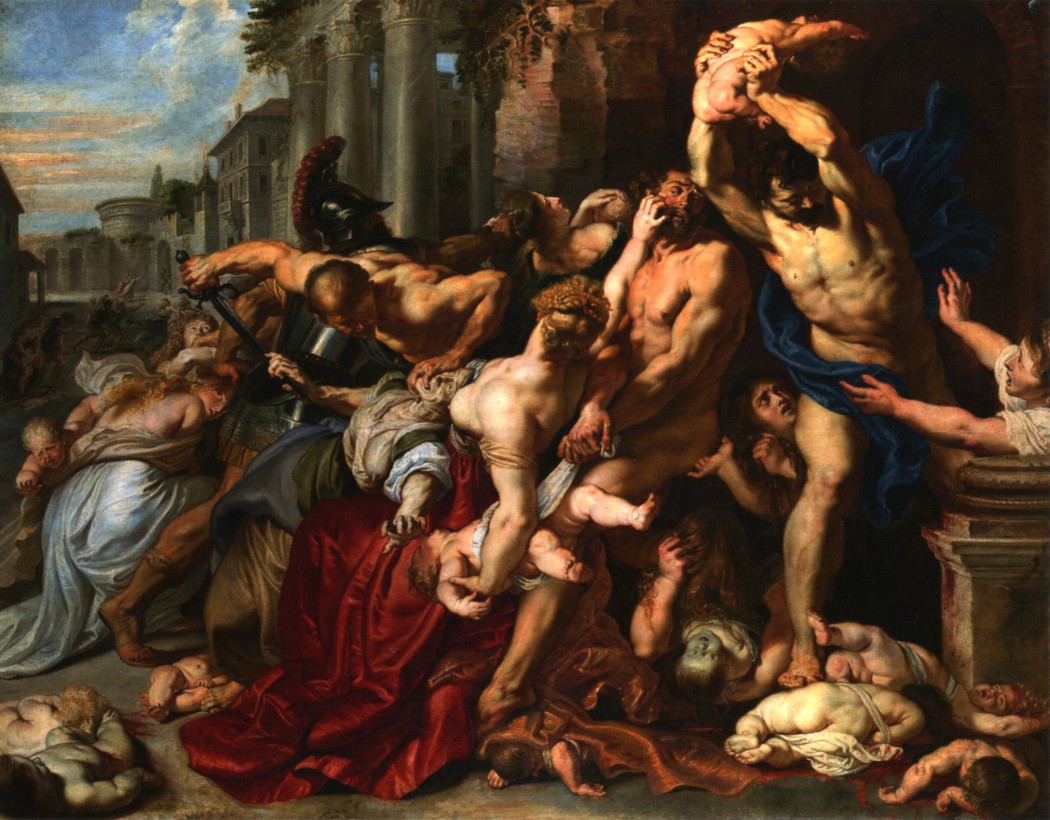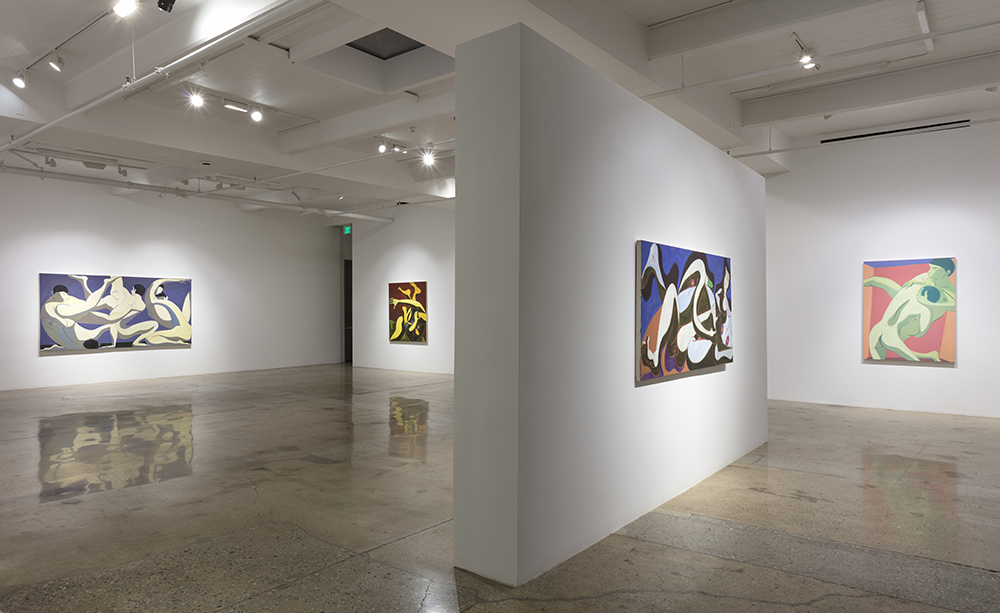
Mark Yang creates paintings that incorporate formal concerns relating to color, line and composition while addressing his identity as an immigrant, a Korean-American and a man. In general, his works depict nude Asian men wrestling. In depicting nude male bodies in close proximity–wrestling, grappling and contorting–Yang aims to convey an aspect of male intimacy that is more common in Korean culture than in American culture. In doing so, he connects his work to art historical forbearers–Greek vessels, Eakins, Muybridge, Bacon and Mapplethorpe. While there are many categories within identity-based contemporary art, the one irreducible category is the body. Despite differences of ethnicity, nationality, belief, gender and sexual orientation, everyone has a body. Starting with this basic understanding, Yang adds his vision of the male body to the history of art.
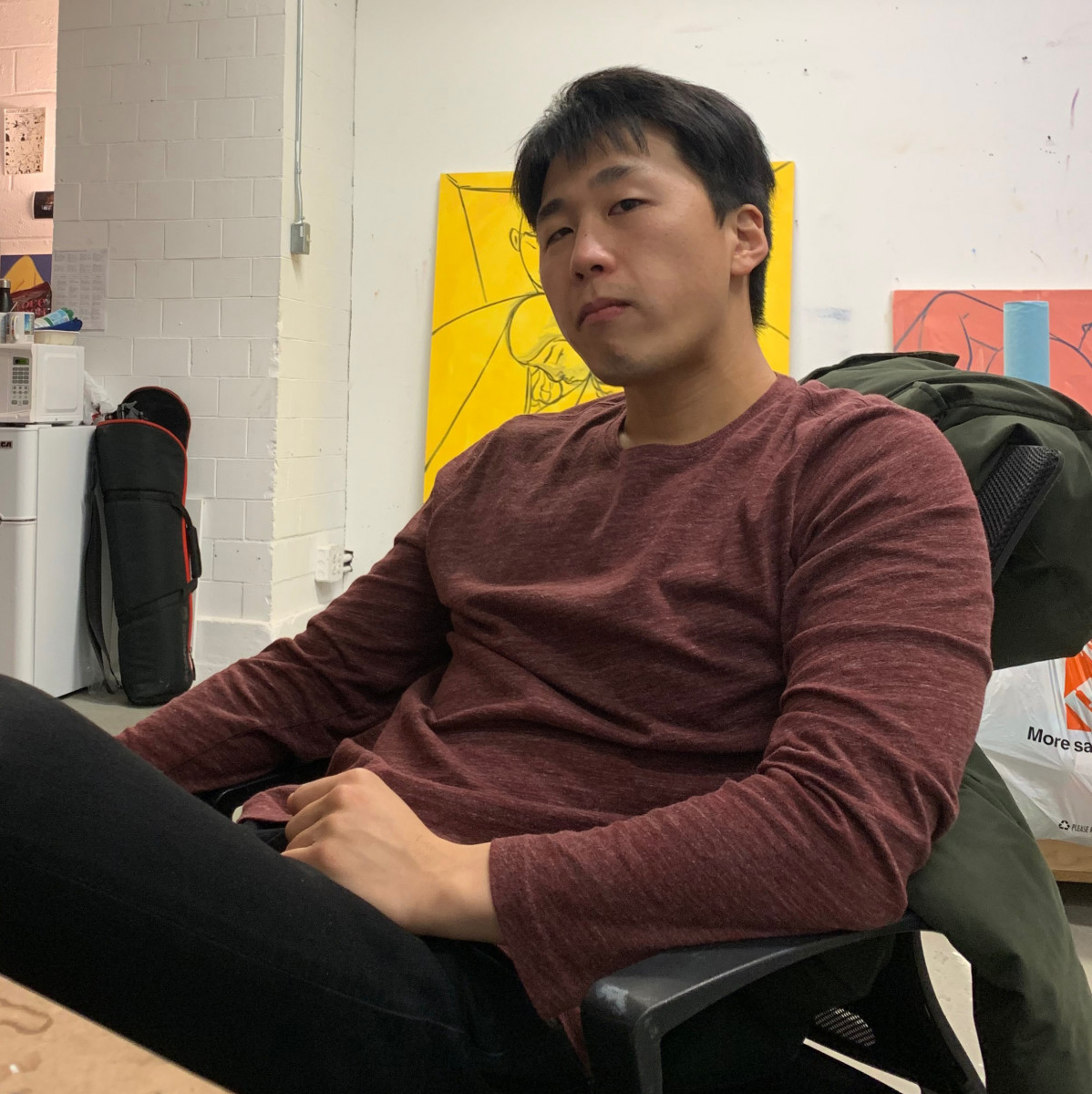
Mark Yang in conversation with Steve Turner
Steve Turner:
What a whirlwind of a year! We met exactly one year ago during your final year of the MFA program at Columbia. So much has happened, but before we talk about your evolution over the last year, let’s go back in time. You spent the first nine years of your life in Seoul, South Korea before emigrating with your family to the United States. Can you describe your family background, what you remember of Korea and what it was like for your family to leave behind the land of your birth in favor of a great unknown?
Mark Yang:
Yeah, it’s crazy to think that just last May I got my MFA and we had our group show, Alone Together at Steve Turner.
I remember Seoul to be a huge and crowded city, sort of like New York. I was always running around the neighborhood, playing outside with friends and exploring the unknown. We didn’t have beds but rather a legless futon that my family slept on together in one bedroom. My parents decided to emigrate to the United States so that my older brother and I could pursue the American Dream. That I ultimately got a college degree and a masters degree is a tremendous source of pride to me and my family. Every day I am thankful for my parents’ sacrifice. It was incredibly difficult and incredibly brave to start a new life in a foreign country where they did not speak the language. Had they not made the move, there is no way on earth I would have pursued a life as an artist!
ST:
I know that you speak Korean and that you have traveled to Korea to visit relatives at various times. How does Korean culture impact your daily life? Did you adjust easily to life in Los Angeles?
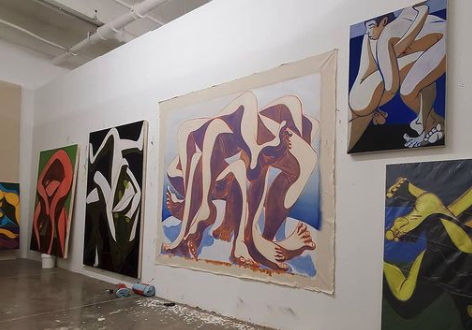
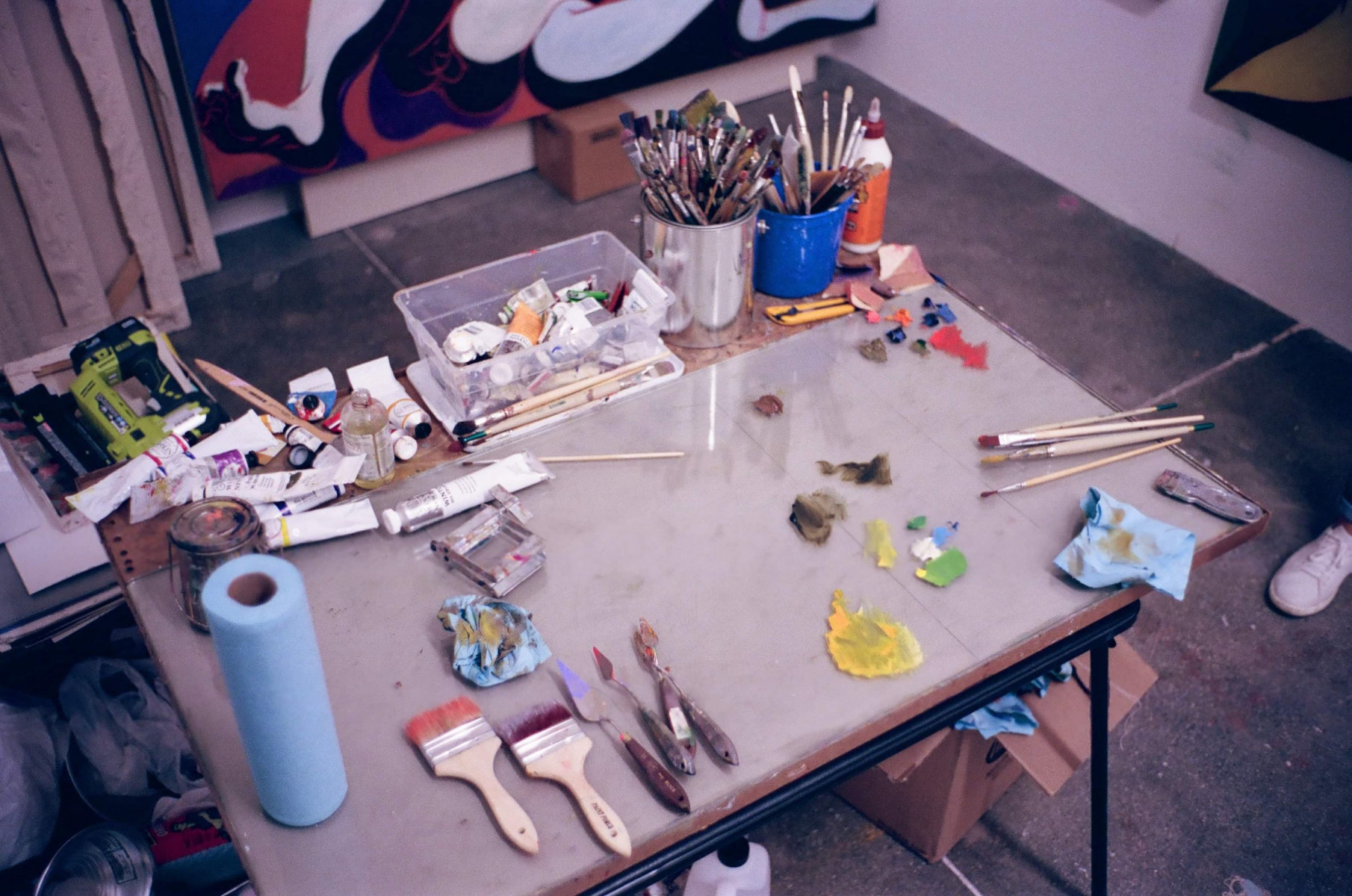
MY:
Even though I have lived in the United States for some seventeen years, I still prefer watching Korean television shows, eating Korean food and listening to Korean music. One of the reasons I am drawn to Korean shows over American shows is the different sense of humor. When I first came to the States, I had a tough time understanding sarcasm and did not understand the popular television shows.I still struggle with them from time to time!
Adjusting to America was not hard nor easy, but it was awkward and frustrating to be unable to thoroughly comprehend and communicate at school. Nonetheless, I was very fortunate to make great friends that helped me adjust to life in America. Though I am not religious, I owe a lot to the Korean Presbyterian church that we attended. My family significantly benefited from this community. One of the elders for whom my dad worked also sponsored us for our green cards. And I am still best friends with some of the people I met at church when I was in elementary school!
ST:
When restaurants are open again, I want to get Korean food with you. Since you have lived in both New York and Los Angeles, I wonder if you get Seinfeld and Curb Your Enthusiasm. What aspects of American culture have you especially embraced?
MY:
I have no idea what Seinfeld and Curb Your Enthusiasm are... (?)
I love the fact that there are no barriers to friendship in the U.S. In contrast, in Korea, one’s friends are typically from the same age group. People in Korea are shocked that I text or have a casual lunch with my former professors and that I call them by name. In Korea, it is somewhat forbidden to say hello to your neighbors if you haven’t met before. In the US, you can get a big smile from a stranger. I love that.
ST:
Both are television comedies that I find exceedingly funny. I wonder if you would.
It is interesting that your works have something to do with friendship and fraternity and that you find American friendliness to be so noteworthy. What sort of education did you get in Los Angeles. Did you have extracurricular activities? Was your interest in art developing during your middle school and high school years?
MY:
I was not an art kid growing up. I was into playing the guitar and competing on my high school’s wrestling team. However, during the latter years of high school I started to become interested in art. My friends were surprised when I told them I would pursue art, and most of them thought I would quit eventually. What excited me about art was the thrill of starting with nothing – a white piece of paper – and seeing something materialize. I didn’t know what one could do with a drawing skill, but after watching the Disney movie Tangled, my dream was to work on feature animation films. I went to Art Center College of Design in Pasadena to pursue that dream but fell in love with painting instead, and here I am now!
ST:
Since your paintings depict wrestling, I would like to know more about your experiences as a wrestler. How did you become interested in wrestling? Were you on the team for all four years of high school? Can you describe a typical practice? Do any specific matches stand out in your memory?
MY:
I think my friend asked me to go to one of the wrestling practices. The wrestling team didn't require a tryout, so I was able to join that day. Unfortunately, I left the team my senior year in high school because I wanted to focus on my college art portfolio. I regret that because I haven't had a chance to be on a sports team ever since. Wrestling practices were very, very intense. The matches were only three to six minutes, so you have to be very well-conditioned to not gas out in the first round. What helped me in wrestling was my perseverance. If I thought I might fail, I would fail boldly. It's something I think about in my studio every day. One cannot be ashamed of failures but must stay determined and unafraid.
My most memorable match was during my junior year and it was against a wrestler on our rival school’s team. Twenty seconds in, and I got headbutted on my upper lip. I was unconscious for a couple of seconds, got my lip busted and lost by disqualification. I also developed a case of ringworm after that match. I also have some memorable winning matches. In my very first tournament as a freshman, I won five straight matches and won a medal. It is probably hanging in my closet somewhere.
ST:
After High School, you attended Art Center in Pasadena. Can you describe the experience?
MY:
Art Center, hands down, changed my life forever. It was a very rigorous program that focused on high mileage, such as drawing three hundred heads of expressions before the first year was half over.. They give us so much that sometimes I thought they were trying to make us feel bad. I was thankful for the exercise once I was in grad school and realized I could make work faster than others and with a natural ease. Of course, art is not about quantity, but Art Center training taught me to work efficiently and diligently. The instructors made my experience so rich. Kirk Shinmoto taught me drawing; Sean Cheetham taught me painting; Bruce Claypool and Jon Nguyen taught me design; David Luce introduced me to contemporary painting; Adam Ross taught me color; Rob Clayton taught me experimentation and Allison Miller and Aaron Smith introduced me to the idea that one could be a studio artist, making art for one’s self, without a client. Without them, there was no way I would be where I am today. I am very thankful to each of them and I think about them all the time.
ST:
Did you make figurative work at this time? What ideas motivated you?
MY:
I was always doing figurative work, and the nude was always the center of my art. I was drawing and painting from live models during my first year. When there was no model, I painted by studying myself. I didn’t have many ideas about painting at that time; instead, I focused on technique, which can be a trap. Towards the end of my time at Art Center, I felt stuck and was tired of relying on a model to create art, so I started to draw from my imagination. That opened things up to a new direction where I started to choreograph the figures on my canvas and explored possibilities of color and application. I was exploring different subjects such as K-pop and ninjas.
ST:
After Art Center you enrolled in the MFA program at Columbia. How was that experience? Is that where you did your first paintings of nude men wrestling? What reaction did you get from your colleagues and instructors?
MY:
I was so excited to live in New York City. That alone is an incredible experience. The Columbia program was great in the way that it offered so much freedom. Each of us could decide when to be in their studio. One could work the bare minimum to enjoy NYC life or go to the other extreme and never leave the studio. They treated us like real studio artists and prepared us for the real world.
About the wrestling series, I started it during the summer between my first and second years. During the academic year, one has numerous studio visits from faculty and guests. During that summer I finally had quiet studio time to myself and absorbed and processed the many confounding things I learned in my first year. Prior to that time, I worked with many diverse subjects and tried too hard to put meaning and thought into individual works. I think that got in the way. I was trying too hard to contextualize images and was not creating and experimenting with the paint. I decided to work with a single subject, to run with it, and to see where it would go. That is when I finally "wrestled" with the process of painting itself rather than the subject I was depicting. It opened up many more possibilities and enabled me to get to where I am now. Many in the faculty were happy for me since I was really struggling and was miserable trying to figure stuff out during my first year. I now understand the value of struggle. Every artist must experience it during their career. In my case, I think of it as training for what I hope will be a life-long career.
ST:
All of this is excellent background for the works in Body Double, your current solo exhibition, which consists of a group of paintings that depict nude men wrestling. What motivated you to focus on this theme?
MY:
There are many things. I knew the subject and the physical moves very well from personal experience. I also liked that wrestling images were already part of art history in Greek and Roman vessels and the photographs Eadweard Muybridge. I was also extremely interested in the potential for compositional complexity, the intertwinement of bodies, and how the subject conveyed various notions of human intimacy. I also liked that I had not encountered many other paintings on the subject. I did not want to depict fight scenes, but rather images of joy, perseverance, excitement, struggle, competition and sport. My paintings might appear to be about one subject, but to me they are far more. By varying mood and sensation the possibilities are infinite.
ST:
As you note, the notion of nude men wrestling conjures up images from Greek vessels as well as Muybridge’s photographs. Do you aim to direct the viewer to one interpretation or another? For example, to some viewers, your works are homoerotic. To others they are about fraternity. Others yet see them as a vehicle for you to explore color relationships and linear patterns. What do you hope viewers will see?
MY:
I hope the viewers are confused! Haha. I never want to make a painting that is specifically about something or one thing. That is not my intention. For me, the best art always has multiple interpretations. The artist doesn’t own the meaning of the work; the viewer does.
That is what makes art attractive and exciting. As the maker, I don’t have a single goal. When I work on a series of paintings, I hope to find surprises that lead to the next and the next, and that is what I wish viewers will experience when looking at my paintings.
ST:
To your credit, the works in Body Double are actually quite diverse. While the figures in the earlier paintings are more clearly identified as Asian, those in the later paintings are not. You zoomed in on the bodies to such an extent that the figures’ heads are outside the picture frame. Is this somehow significant for you? As you have avoided making sexual orientation a central aspect of the work, did you make your identity as a Korean American less central in the later works?
MY:
My identity as a Korean American was never central in my practice, but a side conversation within one painting or another. I instinctively drew and painted figures that resemble me. I have a complicated view of recognizability in contemporary parenting. On the one hand, it is nice that so many diverse groups are now represented in art. However, I also find it limiting when artists get marginalized as merely a member of one group or another. As a reaction to this, I sometimes prefer to hide my own identity and create more ambiguity within my figures. I suppose that this was my inner self's refusal to join today's popular identity-based figurative painting club. On a formal level, I observed that many contemporary figurative paintings are too zoomed out. As a consequence, I wanted to take advantage of the limitations of the rectangular canvas to zoom in on the torso.
ST:
I also noticed that your color range expanded and your compositions became more complicated as the year went on. Are you excited by the possibilities for the future? What experiments are taking place in the studio as you work on your next group of paintings?
MY:
I am continually looking at old master paintings when it comes to composition. For example, I love how Rubens created enormous paintings filled with actions that seem too complicated to grasp but that still have a rhythm and flow which holds my attention. It’s like being on a rollercoaster ride. That is what I want people to feel when they look at my paintings.
Color has been the most intuitive aspect of my painting practice. It is a reflection of feeling and mood. I also look for interesting color relationships and enjoy squeezing a new color out of the tube. It’s been snowing a lot on the east coast this February, and I realized I’ve never made a white painting. So white and snow have been on my mind these days. I love that I have the freedom to change with the weather.
